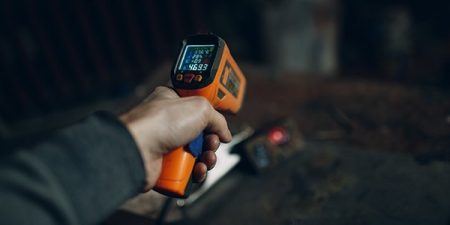
End verticals’ focus on zero-defect manufacturing inflates demand for material test equipment
Maryam Farag
Economy Industry Aerospace Automotive Construction Electronics Manufacturing Resource Sector aerospace automotive Canada construction COVID-19 Economy electronics manufacturer manufacturing metals
Photo: Frost & Sullivan.
Frost & Sullivan’s recent analysis of the global material test equipment market finds that end verticals’- automotive, aerospace, primary metals, and plastics—emphasis on zero-defect manufacturing is inflating the demand for material test equipment, assuring high-quality products with international standards.
Classified as universal testing machines, servo-hydraulic testing machines, impact testing, and hardness testing machine based on product segmentation, the material test equipment market is estimated to reach $816 million by 2025 from $689.9 million in 2020, registering moderate growth at a compound annual growth rate (CAGR) of 3.4 per cent. However, the decline in capital expenditure by the automotive and aerospace industries due to the COVID-19 outbreak has impacted the testing equipment industry. Despite these issues, as countries begin to lift lockdowns and relax restrictions, the market is expected to recover in 2021 and return to the pre-COVID levels by 2022.
“Growing interests and research in reducing the weight of vehicles in both the automotive and aerospace industries to improve fuel efficiencies will create opportunities for material test equipment,” said Ram Ravi, Measurement and Instrumentation Research Analyst, Frost & Sullivan. “The convergence of multiple technologies/products such as automation, robotics, cloud computing, software, and machines is key to realizing the smart factory vision. As organizations continue to drive their digitalization efforts, the need for process automation will trigger demand for automated test equipment.”
“With a healthy economic recovery projected for China and India, Asia-Pacific will remain the largest market for material test equipment over the forecast period, registering growth at a 4.2 per cent CAGR, followed by North America, Europe, and the Rest of World at 3.3 per cent, 2.8 per cent, and 2.1 per cent, respectively. Further, the UTM segment is projected to occupy the largest market share due to these machines’ modular ability to perform different tests with one piece of equipment, followed by SH, HT, and IT.” said Ravi.
Testing newer materials in applications across industries such as medical, construction, and electronics will further boost the material test equipment market, presenting lucrative opportunities. Participants should look into the following:
- Material testing for additive manufacturing quality assurance:
- Vendors should offer modular products that can be used flexibly for specific customer requirements.
- Market participants should expand their portfolios to include testing systems with automation to cater to the growing interests in Industry 4.0.
- Enabling automated material testing:
- Automating a lab is possible with several intelligent testing systems connected to the central system. However, companies should focus on data security.
- With the increased sensorization of individual components and the use of cobots, companies should look at potential partnerships or joint ventures with robot manufacturers or sensor companies.
